“This is a novel importation; but if the experiment should prove successful, it may become one of some importance to the improvement of the growth of wool on this continent.” New York Herald article on llamas arrival in New York, December 16, 1857
On December 15, 1857, 42 llamas arrived in New York City on the Panama Railroad Company’s brig E. Drummond under the command of Captain Crippen Chapman (try saying that fast). The llamas (they were probably alpacas, but the New York press called them llamas) were owned by French naturalist Eugene Roehn and consigned to James I. Fisher & Son of Baltimore.
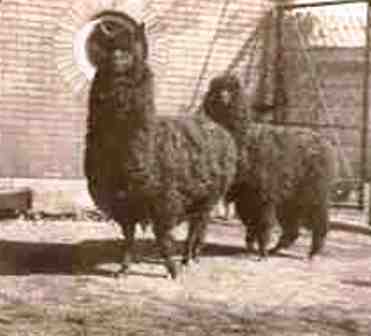
Their journey began in the mountains of Ecuador, and from there they traveled to Panama. When they reached Panama, the llamas had to go by railroad to Aspinwall (today’s Colón), which was then the Atlantic terminal of the Panama Railroad (the canal would not open until 1914). From Aspinwall the herd sailed by ship on board the E. Drummond to New York via Key West.
By the time the llamas arrived in New York, they were extremely thin. The herd itself had also thinned out: Although the expedition began with 71 llamas, 29 died during the long journey.
Eugene Roehn’s plan was to introduce the llamas into wool-growing districts in the northeastern United States. Because they produced the finest kind of alpaca wool – worth 60 cents a pound as an export – Roehn thought they would become more valuable than sheep.
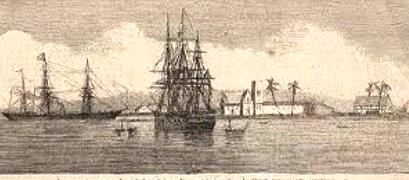
The First Stop: Allerton’s Bull’s Head Hotel
Upon their arrival in New York, the llamas were taken to the stables of the Bull’s Head Hotel near the northeast corner of 44th Street and Fifth Avenue. This hotel, owned by the Allerton brothers, was the resort of the drovers and butchers who did business at the cattle yards just east of the hotel.
In the 19th century, the Allertons of Amenia, New York (Dutchess County) were to livestock what the Kardashians are to reality TV. Between 1800 and 1876, the Allerton family built a livestock empire that stretched from Illinois to New York City. By the late 1870s, they controlled the shipment of livestock into New York City on all the major railroads, including the Pennsylvania, the New York Central, and the Erie.
The first documented drover (one who moves livestock) in the family was Archibald Montgomery Allerton, who was born in Amenia in 1780. Shortly after his marriage to Rebecca Chamberlain in 1803, A.M. Allerton moved to New York City. There, he operated a drove yard and cattle market known as the Upper Bull’s Head on land once part of the Thomas Buchanan Farm.

Except for a break to serve as a lieutenant in the War of 1812, A.M. Allerton continued to operate the Bull’s Head until the 1830s. When he retired to Broome County, New York, to resume farming, Allerton turned over the drove yards and hotel — alternately called Allerton’s Bull’s Head, Upper Bull’s Head, Washington Drove Yards, and Allerton Stock Yards — to his sons, George Washington, David, and Archibald M. Jr.
Sometime around 1849, David and Archibald Jr. left the cattle business to get on the California Gold Rush bandwagon. They returned to New York City with $31,000 and resumed their livestock business with several Manhattan drove yards.
In July 1862 – two months after their father died – the Allerton brothers lost the Bull’s Head hotel and stockyards during the New York City Draft Riots. According to published reports, the mob set the hotel and tavern on fire after David Allerton had refused to serve them alcohol. In 1866, Archibald and his partners in the National Stock Yard Company entered into a contract with the Erie Railroad to operate new stockyards on 11th Avenue and 40th Street.
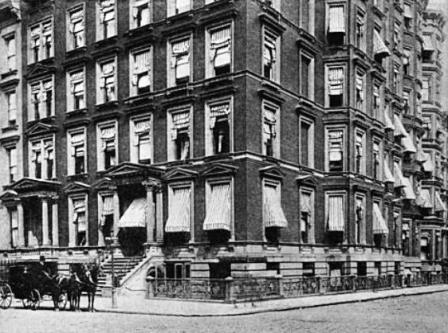
John H. Sherwood, a prominent builder known for his high-class residences on Fifth Avenue north of 42nd Street, bought the former Allerton site after the Civil War ended and erected the Sherwood House, a popular family hotel. Sherwood and others later founded the Fifth Avenue Bank of New York, which opened for business in October 1875 in the basement of the Sherwood House.
Twenty years later, the old hotel was replaced by Delmonico’s restaurant (demolished in 1923). Today, 551 Fifth Avenue is the Fred F. French Building, a 38-story skyscraper erected in 1927.
Although most of the llamas remained on exhibit at Allerton’s, about a dozen appeared at the American Institute’s Fat Cattle Show at the Crystal Palace, an annual event that brought cattle men and breeders together to sell livestock and compete for the fattest cattle. The llamas, although quite thin under their thick wool coats, were quite popular with the men’s wives and children.
The Fat Cattle Show at the Crystal Palace

In July 1852, the Association of the Exhibition of the Industry of All Nations received permission from city authorities to erect a large exhibition hall on Reservoir Square, along Sixth Avenue between 40th and 42nd streets — what is today Bryant Park and the main branch of the New York Public Library.
Once a field occupied by small hills and streams, and later a potter’s field following the Revolutionary War, this part of Manhattan was far outside the city limits and still rural with dirt roads in the 1850s.

The Crystal Palace was built to house what is often thought of as the first United States world’s fair, known as the “Exhibition of the Industry of All Nations.” The exhibition was inspired by similar events featuring agricultural products and industrial innovations that took place in London in 1851 and Dublin in 1852. In New York, the exhibit opened on July 14, 1853, with newly sworn President Franklin Pierce in attendance.
The exhibition closed on November 1, 1854, but the Crystal Palace continued to host the Fair of the American Institute, including the Fat Cattle Show, for the next few years.
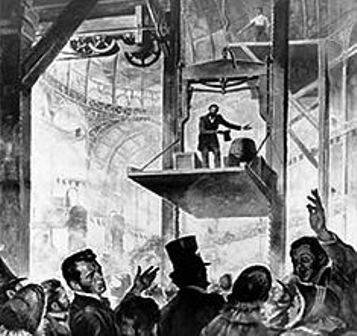
On October 5, 1858, a fire broke out in the Crystal Palace lumber room during the American Institute Fair. Nearly 2,000 people were inside when the fire broke out, but no one was injured. One man was reportedly rescued only seconds before the dome collapsed.
During the Civil War, Reservoir Square was used as an encampment for Union Army troops. Twenty years later, in 1884, the square was renamed Bryant Park in honor of William Cullen Bryant, the recently deceased poet, civic reformer, and longtime editor of the New York Evening Post. The city also approved designs for the New York Public Library, which was completed in 1911.
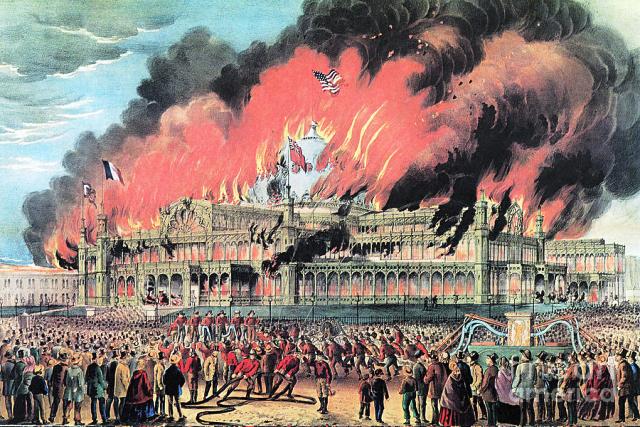




I love reading your posts and this one is a must share to a friend who has llamas. Happy Wednesday.
Glad to find your blog. Really enjoyed it!
A to Z blogger
Wow, what a terrific theme!